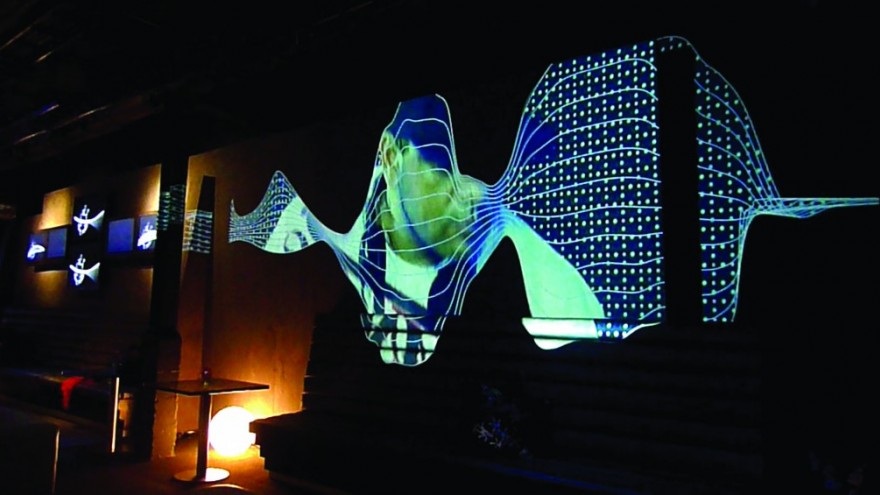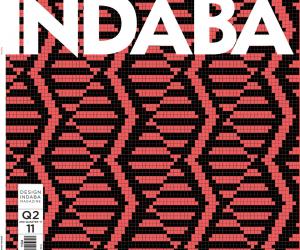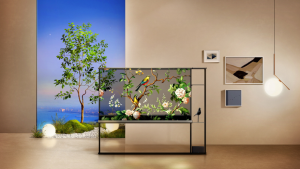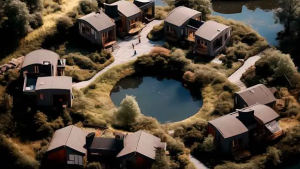First Published in
Back in the year 2000 the terms “digital”, “interaction” and “design” didn’t regularly feature in the same sentence. And there certainly wasn’t a widespread understanding of what it is, or where it could be applied. But this was the year that Rahle Dusheiko, a graduate of the AAA School of Advertising, had the idea to be a digital curator, with a vision to make big, life-size digital installations.
In 2002 she started freelancing as a web developer, still determined to work on digital installations even though she wasn’t exactly clear on what the details entailed yet. Gradually her company, Pixel Project, started attracting more projects with a different tone to them.
The first digital installation Dusheiko did was for a democracy exhibition at the Castle of Good Hope in Cape Town. The installation took the form of an interactive polling station with a joystick and became a space that could assess people’s opinions about democracy. This was in 2004 and Pixel Project has created an impressive number of digital installations since then.
Pixel Project attributes much of their success to the clients who, over the years, have allowed them to explore and experiment. While their work is guided by a sense of curiosity and experimentation, Dusheiko emphasises that they are not experimental artists. “We are very much business-minded and interested in getting measurable results that mean something to somebody.”
With clients including advertising agencies, online campaigns, education institutions, cultural institutions like museums, large businesses and government, Dusheiko says it’s difficult to pinpoint exactly what they do because they do so many different things. “Yet we see all our projects as connected, they’re all about facilitating interaction.”
Relevance is another key factor in the work Pixel Project undertakes. Dusheiko explains that often a new piece of technology is exciting for all of 30 seconds and then it doesn’t do anything or go anywhere. Here’s where Pixel Project is able to intervene: “It’s about making technology relevant to whatever the result needs to be, whether it is that the user needs to learn or know something, or whether its about extracting information from the user.”
Research is the cornerstone of every project Pixel Project undertakes. “We have very few cut-and-paste projects, there is always some form of customisation,” acknowledges Dusheiko.
This is especially true of Pixel Project’s ongoing personal challenge to create a user interface for a surface that people are not used to interacting with. “We love to explore ways of digital interaction that don’t involve a keyboard or a mouse,” Dusheiko explains.
In 2010 for instance, they created an interactive relief map table and touchscreen kiosks for the Umgungundlovu Multimedia Centre and won a gold Loerie Award for digital application. Since the centre’s audience weren’t particularly tech savvy, it was crucial for the interface to be easy and intuitive to master. Pixel Project created a 3D relief map of the Emakhosini Valley with two touch screens mounted on the side of the table. These screens offered visitors a menu from which they could select narrated animations telling them stories about the many sites of cultural and historical interest in the valley.
Dusheiko knows a project is successful when people simply use the interface. Good design never gets in the way of the experience, it works on an almost intuitive level but this only happens if the technological interactions are based on things people do in the real world. The human element is the main focus here, looking at what the user is doing and how they are doing it. In a similar way, Pixel Project always keep an eye on where technology is going and then find the right client to explore that with.
Understanding interaction design as a platform that facilitates communication between a person and another person and/or object, Pixel Project prioritises both the digital experience and the story for which the digital medium is the platform. In any good story there is a linear progression, starting with a beginning, leading to a highlight in the middle and concluding at a place where the user is left with a message, lesson, feeling or emotion. “At the moment technology, and not just new technology, falls flat on storytelling and relevant content in the right context,” says Dusheiko.
It’s here that augmented reality plays a futuristic role. “It sounds kinda sci-fi in a way,” explains Dusheiko, “but eventually we feel that digital reality and reality will merge in a way that we’ll interact with both without being aware of the distinction.”
Only beginning to explore this, Pixel Project collaborated with Jupiter Drawing Room, Gloo, Wicked Pixels and Ambient 3D for the 2011 Design Indaba Expo. They created an augmented reality installation related to the campaign theme “What will creativity hold for the future?” Using a software and tracking system, hypothetical future products were mapped onto boxes in the form of a QR code. Users were then encouraged to point the box with the QR code to a screen that would then show the user interacting with 3D models of the imagined product.
As interactive digital experiences continue to grow in scope and popularity, it’s important to be aware of the user’s expectations of this experience. Dusheiko believes it’s reward and recognition users are after. “Users want to feel like they’re being spoken to, and they want a forum in which they can speak back. We’re living in an age of transparency.”
She adds that people also just want something new and different. This is where Pixel Project finds its biggest challenge. “Growing interesting media and relevant, innovative solutions for traditional marketing spaces is a huge challenge because there is a lack of understanding and a fear of new things, especially where technology is concerned,” Dusheiko decries. Understanding what works on a given platform is another challenge: “We don’t always get it right the first time, it’s a learning curve.”
But, says Dusheiko, they always try to put some magic in their project, no matter how small. “We’ll add that special something, that magic, to every project even if nobody knows it but us








